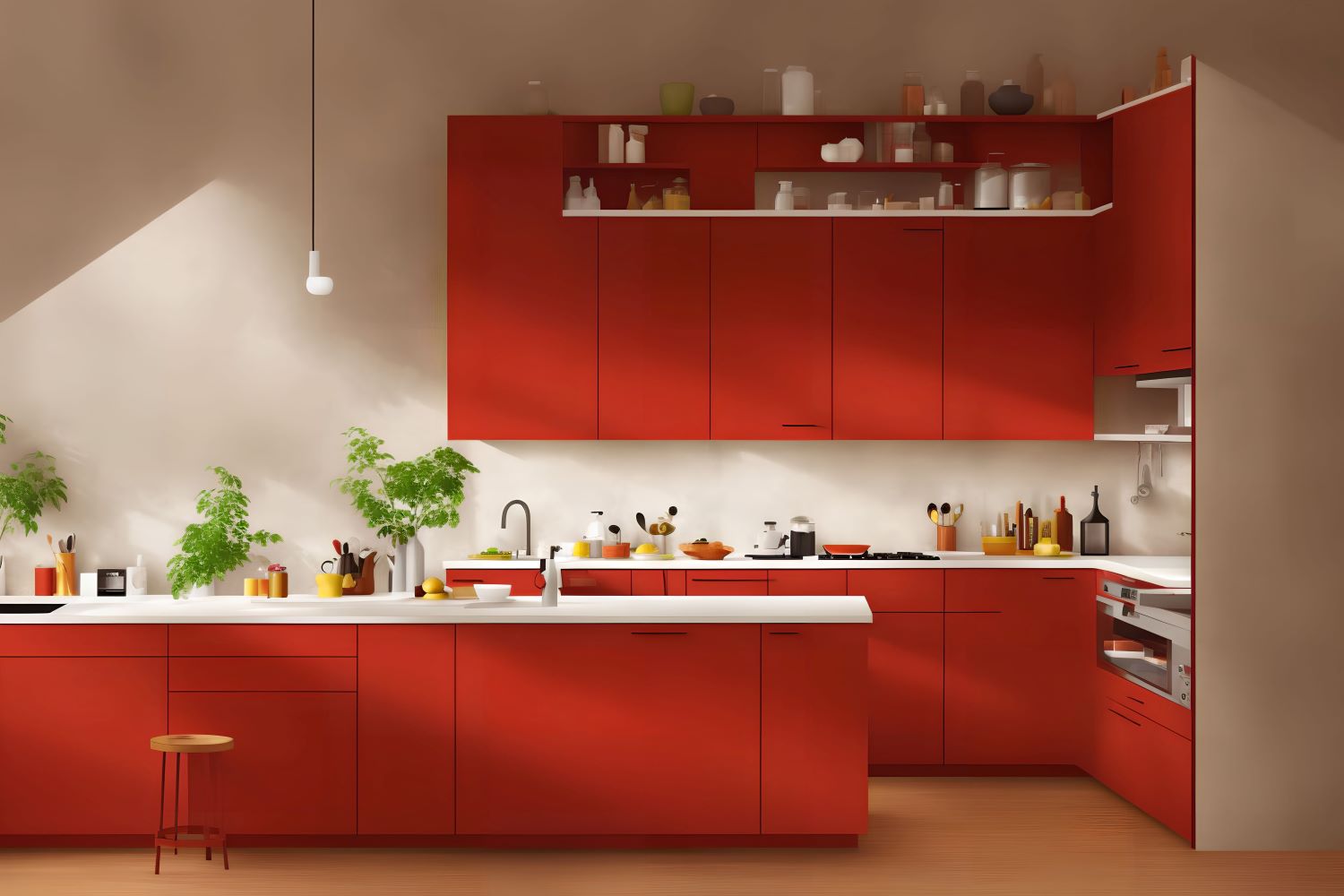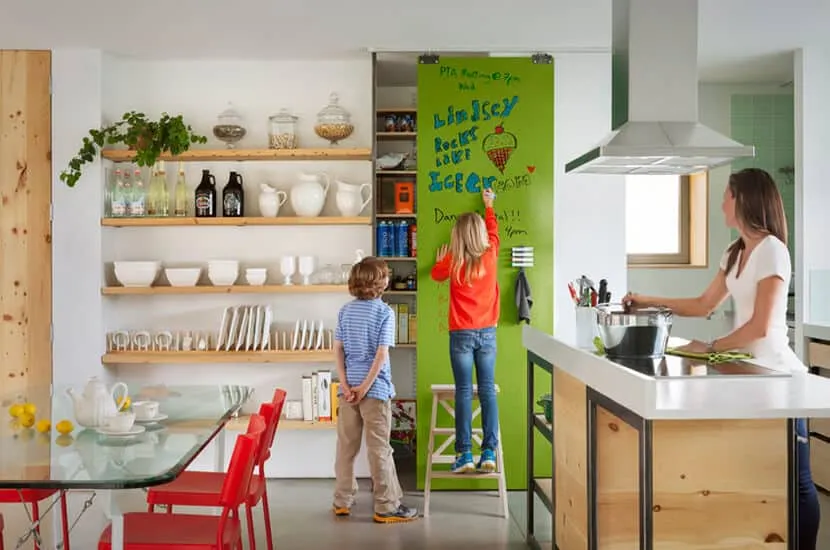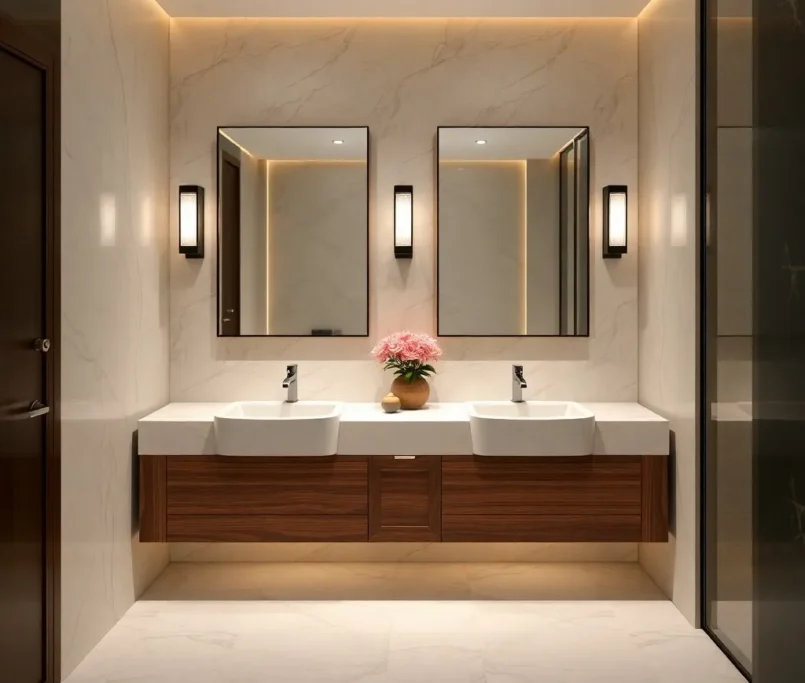Plywood cabinets offer a range of advantages and disadvantages to consider when deciding on the best cabinetry option for your home. The pros of plywood cabinets include affordability, durability, and the ability to customize. Plywood cabinets are also typically less expensive than other types of cabinetry, making them ideal for those on a budget. Additionally, plywood is a strong and resilient material, making it a great choice for cabinetry that will see a lot of wear and tear. Lastly, plywood cabinets can be customized and styled to fit any existing décor. Read More in the Article below!
=> Related Articles: 10 Best Cabinet Materials: How To Choose Right!
- Solid Wood Cabinets: Pros and Cons to Consider
- Plywood Cabinets: Pros and Cons to Consider
- Particleboard Cabinets: Pros and Cons to Consider
- Melamine Cabinets: Pros and Cons to Consider
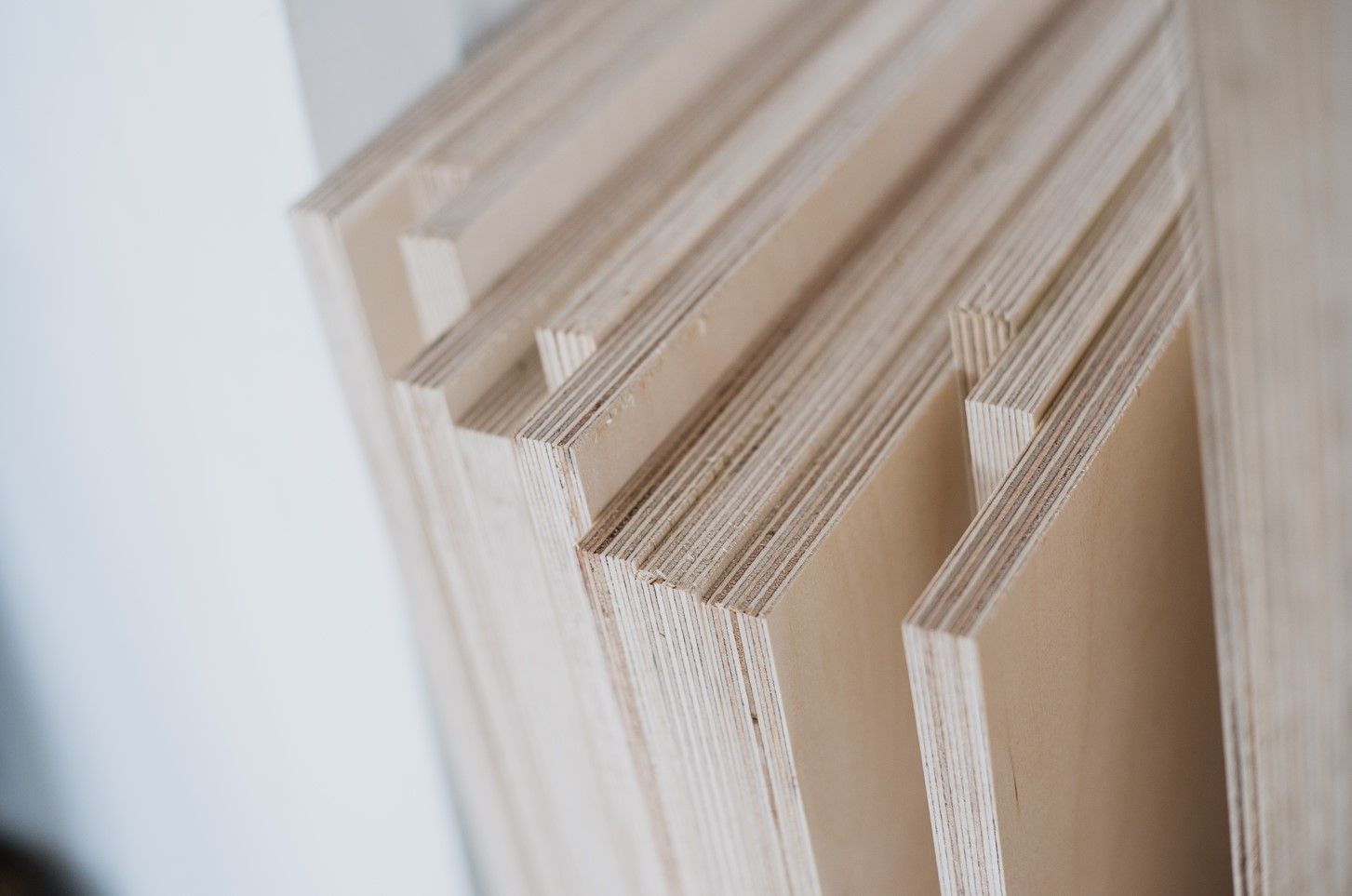
What is Plywood?
Plywood is an engineered wood product, which refers to man-made products created in factories. This type of wood is made up of several layers of thin sheets of Real wood, scrap wood, shredded wood fibers, or MDF, and Particleboard that are glued together.
The Common Type of Plywood for Cabinets:
|
Type of Plywood
|
Description |
Key Features
|
| Veneer-Core | One of the most common types of plywood for cabinetry, providing an excellent balance of durability and reliability. |
Durable, reliable, and widely used for cabinetry.
|
| MDF-Core | Made with a medium-density fiberboard core sandwiched between face and back veneers. The veneer is glued directly onto the core, eliminating the need for a crossband veneer. |
Highly uniform and consistent panel core. Ideal for precise applications.
|
| Particleboard-Core | A cost-effective option with face and back veneers glued directly to the particleboard core. Offers a flat surface but lacks the screw-hold strength of other plywood types. |
Affordable and flat but less durable in screw-holding capacity.
|
| Lumber-Core | Features a solid lumber core that provides excellent bending strength, screw-hold ability, and resilience. Ideal for shelves and cabinets that require durability. |
Strong, resilient, and suitable for long or wide shelves.
|
| Fiber-Core | Typically made with fiberboard material, offering a smooth, uniform surface. Best suited for interior applications where precision is needed. |
Smooth surface and uniform composition.
|
| Combination-Core | Combines different core types, such as veneer and MDF, to optimize strength, consistency, and cost-effectiveness for specific applications. |
Versatile and tailored to project needs.
|
| Softwood Plywood | Made from softwood trees like cedar, pine, redwood, Douglas fir, and spruce. Thin veneers are glued in a cross-grain pattern, improving structural stability and reducing warping or cracking. |
Lightweight, structurally stable, and commonly used in construction.
|
| Hardwood Plywood | Crafted from hardwood trees, such as birch, for strength and durability. A popular choice for furniture and construction projects where heavy usage and visual appeal are priorities. |
Strong, durable, and aesthetically pleasing.
|
| Special-Purpose Plywood | Designed for specific applications, incorporating veneers with tailored properties to meet requirements such as moisture resistance, fire resistance, and flexibility. |
Customizable for diverse applications with various grades, finishes, and thicknesses.
|
Plywood cabinets are a popular choice for many cabinet makers due to their durability and cost-effectiveness. Veneer-core plywood is one of the most common types of plywood used for cabinetry, and it’s an excellent choice for anyone looking to get the job done right. This type of plywood is constructed with a center veneer and crossband veneers that are alternately layered on both sides of the center veneer. This process creates an odd number of veneers for the core, resulting in a super sturdy and lightweight panel. Veneer Core plywood is well known for its impressive weight-bearing strength, as well as its bending strength and screw-hold ability. This makes it perfect for projects where you need a reliable, strong material that won’t weigh you down. It’s also significantly lighter in weight than other core types, making it ideal for a variety of applications. In Addition, Manufacturers also offer a range of engineered wood core panels, including medium-density fiberboard (MDF), particleboard, and oriented strand board. Some panels even combine engineered wood with solid wood plies for more robust construction.
=> Read More: Types of Grade Plywood Cabinets
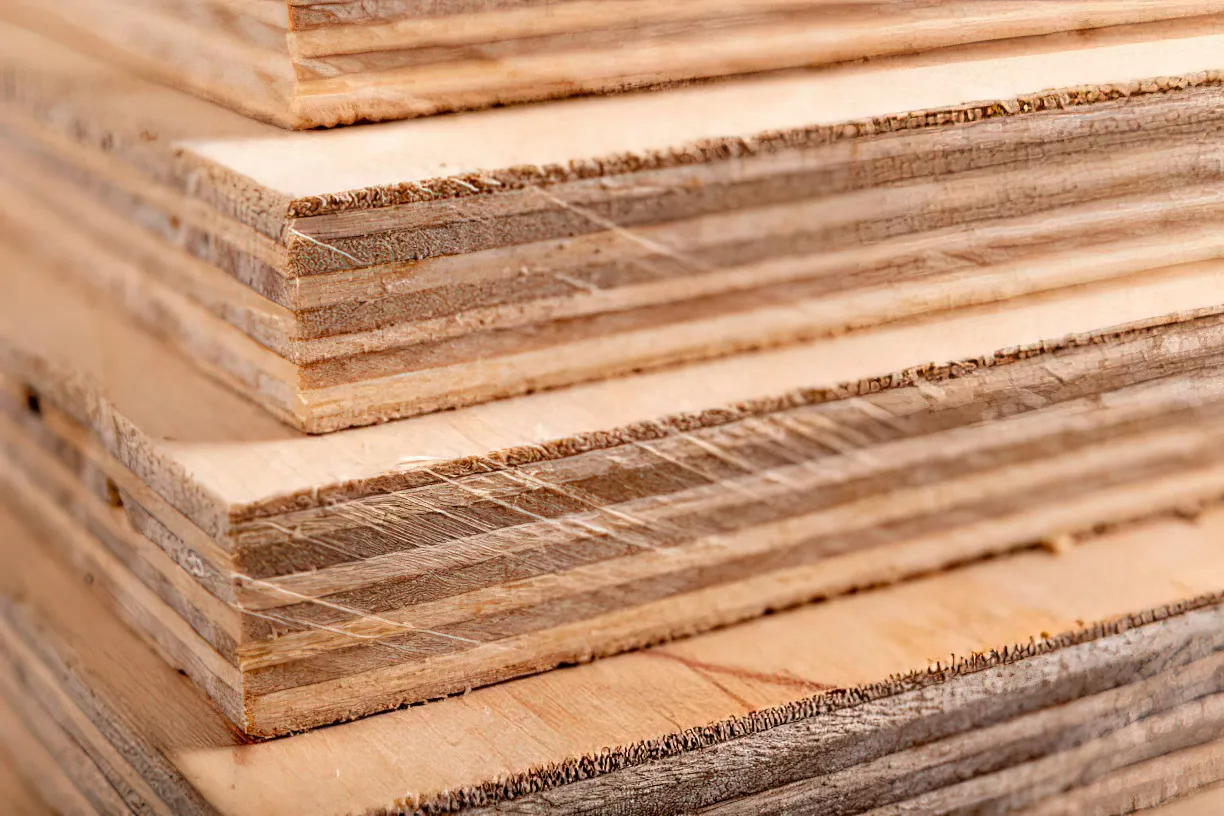
The Pros of Plywood Cabinets
Plywood is often considered a Good material for cabinets. Cabinets that are made out of plywood not only look better but are also very convenient to use. They can be found in every home since they make storing things easier. They can also be customized to cater to the storage needs of every individual. Moreover, these cabinets are very affordable. Compared to other types like solid wood and stainless Steel cabinets, they are less expensive.
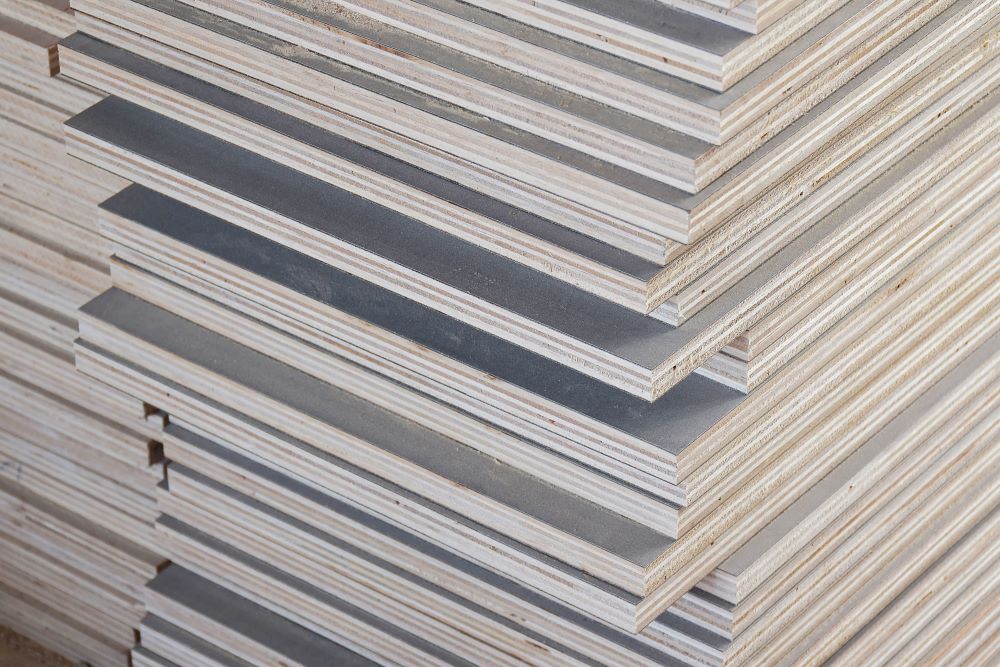
Cheaper than Solid Wood:
Plywood cabinets are also a great option if you’re looking to save money. Because they are made from thin layers of wood veneer, they are more cost-effective than solid wood cabinets. Not only are they much more affordable than solid wood cabinets, but they also provide a unique look that can be tailored to fit any taste and budget. But Plywood is a more expensive alternative to using a material such as MDF, Particle Board however the strength, quality, and environmental credentials make up for the additional cost.

Durability:
Plywood cabinets are known for their durability and can withstand wear and tear better than other cabinet materials such as particle board. They will not warp or crack over time and can withstand heavy use. Because plywood is usually made from hardwood, which is a higher grade of wood than other materials such as MDF or Particle Board. This means that Plywood is less likely to chip or dent, making it a great choice for furniture or other projects that need to look good and las
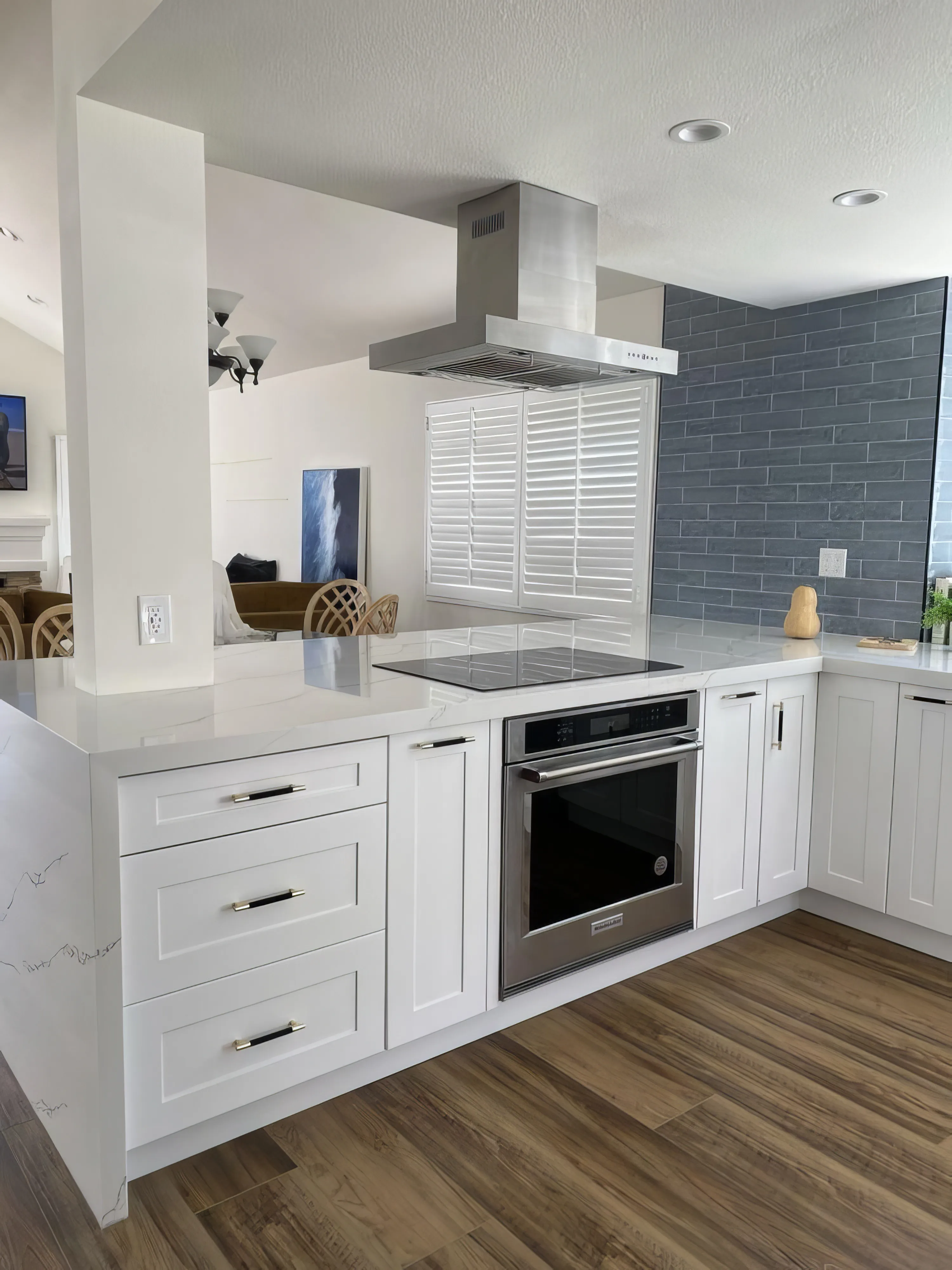
Flexible and customizable:
Many homeowners opt for plywood kitchen cabinets for their attractive appearance, which is often a much better and more durable choice than traditional particle board furniture. Not only is plywood versatile and easily customizable, but it also comes in a variety of colors and finishes to match any decor. And if you ever want to change up your look, you can always paint or refinish your plywood cabinets to give them an entirely new look. With plywood, you don’t have to sacrifice style for durability and you can rest assured that your kitchen cabinets will last for years to come.

The Cons of Plywood Cabinets
The quality Depends on the number of plies and the thickness of the wood
The number of plies is a major factor of Plywood. The more plies, the more stable and reliable the plywood is likely to be. However, there are some drawbacks to having more plies. For one, it increases the cost since more materials are needed. Additionally, it can be more difficult to work with, since the layers may not always be perfectly aligned. It’s also important to consider is what is the core layer, and the quality of the glue used to adhere the plies together. Low-quality glue can cause gaps and weaknesses in the plywood, making it less reliable and durable. All in all, it is important to consider the number of plies when selecting plywood, as this can have a major effect on its quality.
Not as strong as solid wood:
Plywood is a softer material and is not as durable as solid wood or metal cabinets. As such, plywood cabinets may be more prone to scratches, dents, and other damage over time. Additionally, since plywood is a softer material, it may not hold up as well to heavier items or items with sharp edges as solid wood or metal cabinets.
Moisture and Water Damage:
Plywood is a composite wood material made up of thin layers of wood veneer glued with the core materials together. Over time, moisture can cause the core layers to peel apart, and the cabinets can become warped or uneven.
Maintenance Requirements
Any type of wood cabinetry, including plywood, demands regular maintenance to preserve its appearance and functionality. While plywood offers greater moisture resistance compared to particleboard or MDF, it still requires diligent care to prevent damage and deterioration. Routine inspection for signs of water damage, such as swelling or discoloration, is crucial for early detection and remediation.
Comparing Plywood Cabinets with Other Materials
Despite the variety of materials available for cabinets, plywood remains a popular choice for many homeowners. It is important to understand the differences between plywood cabinets and other materials to make an informed decision when upgrading your kitchen or bathroom.
| Plywood Cabinets | Other Materials |
| Strength and Durability | May not match the durability of plywood |
| Natural Wood Look | May offer a different aesthetic |
| Moisture Resistance | May vary in resistance to moisture |
| Cost | May be more or less expensive |
Plywood vs. Solid Wood
On one hand, plywood is engineered for strength and resistance to cracking and warping, making it a reliable choice for cabinets. On the other hand, solid wood cabinets may offer a more traditional, natural look but can be susceptible to changes in humidity and temperature. if you want to compare the two materials, You need to consider your priorities – durability versus aesthetics – in making the right choice for your home.
=> Read more: Solid Wood Cabinets: Pros and Cons to Consider

- Environmental Impact: Plywood is often considered more environmentally friendly as it is made from thin layers of wood veneer, utilizing the entire log efficiently. Solid wood may involve more waste in the manufacturing process.
- Weight: Plywood tends to be lighter than solid wood, making it easier to handle during installation. This can be an important consideration, especially for larger cabinet installations.
- Consistency in Quality: Plywood is manufactured to be consistent in terms of strength and stability. Solid wood, being a natural material, may have variations in grain patterns and density, which can affect the overall consistency of your cabinets.
- Customization: Plywood can be engineered to specific thicknesses and strengths, offering a higher degree of customization. Solid wood, while also customizable, might have limitations in achieving certain structural requirements.
Plywood vs. Particle Board
Board Despite being a more affordable option, particle board cabinets are generally less durable and may not hold up as well in areas prone to moisture. Plywood, with its layers of wood veneer glued together, provides better resistance to moisture and is known for its strength and stability.
=> Read more: Particleboard Cabinets: Pros and Cons

- Strength and Durability: Plywood generally outperforms particle board in terms of strength and durability. Particle board can be prone to sagging or breaking under heavy loads.
- Resilience to Moisture: Plywood has better resistance to moisture compared to particle board. In areas with high humidity or potential water exposure, plywood cabinets are less likely to swell or disintegrate.
- Edge Strength: Plywood has a solid edge that holds screws well, making it suitable for hinges and other hardware. Particle board, on the other hand, may have a tendency to crumble at the edges, affecting the overall structural integrity.
- Formaldehyde Emissions: Particle board often contains glue and resins that may emit formaldehyde, a potential indoor air pollutant. Plywood can also have adhesives, but some types are manufactured with low-formaldehyde or formaldehyde-free options, making them a healthier choice for indoor air quality.
- Cost of Repairs: In case of damage, plywood is generally easier to repair compared to particle board. It can be sanded and refinished, while repairs to particle board may be more challenging and may not provide the same aesthetic results.
Plywood vs. MDF
Medium-density fiberboard (MDF) and plywood, each have their own set of advantages and disadvantages when it comes to cabinetry. In this comparison, we’ll look closely at the differences between Plywood and MDF, highlighting their advantages and disadvantages as well as other factors to think about when choosing cabinetry for your home. To help you achieve the goal of long-lasting cabinets that also look great, let’s go over the differences between Plywood and MDF.
=> Read more: Medium-Density Fiberboard (MDF) For Cabinets Benefits

- Weight: MDF is denser and heavier compared to plywood. Plywood’s lighter weight can be advantageous during installation and may be preferable in certain design scenarios.
- Edge Profile: Plywood generally has a visible edge grain, which some people find appealing in certain design styles. MDF, being a homogeneous material, has a smoother edge profile that is consistent across the entire board.
- Screw Holding Capacity: Plywood tends to have better screw holding capacity than MDF. When installing hardware or making modifications, plywood may offer a more reliable grip for screws.
- Resilience to Moisture: While both materials are susceptible to moisture damage, plywood often performs better in humid conditions. MDF can swell and break down more easily if exposed to prolonged moisture.
In Conclusion: Plywood Cabinets: Pros and Cons
You may get a full picture of the benefits and downsides of plywood cabinets by reading our pros and cons article. Plywood cabinets have advantages over solid wood in terms of durability, strength, and warping resistance, but they might be more expensive and have fewer treatment options. If you want to know if plywood cabinets are good for your kitchen or any other kind of cabinetry, you need to know these things. Consider your unique needs and available funds when you assess the benefits and drawbacks.
Wholesale Plywood Cabinets in Orange County
Would you like to remodel your kitchen with affordable, high-quality cabinets? Stop looking! Guilin Cabinets in Irvine Orange County, CA, We are a Wholesale Plywood that offers a stunning variety of alternatives if you want to improve the look of your kitchen on a budget.
Please! Contact Guilin Cabinets Today for assistance!
- Hotline: +1 949 299 2370
- Email: info@guilincabinets.com



















